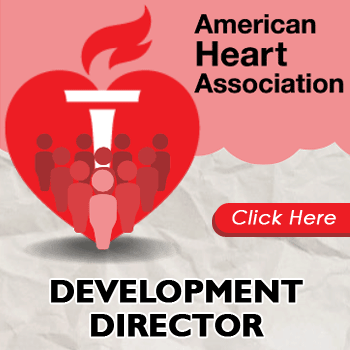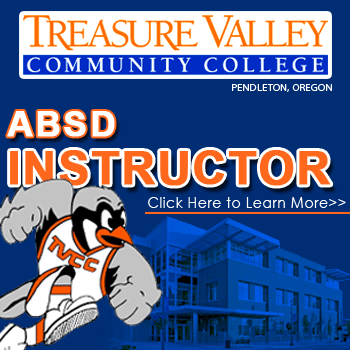
Athletic Trainer (IVC - Substitute)
Job Description
Application Instructions:
- Complete all sections and fields on the application and attach all required documents – incomplete applications may not be considered.
- Include all relevant education, training, and/or experience on the application.
- Do not include any personally identifiable, confidential, or otherwise unrequested information that does not pertain to job related factors (e.g., social security number, date of birth, pictures, etc.) on your application or attached documents.
- For job postings with a close date, all applications received by 11:59 PM (Pacific Time) on the job posting close date, will receive consideration.
- For job postings with an initial screening date, all applications received by 11:59 PM (Pacific Time) on the job posting initial screening date, will receive priority consideration; however, typically the job posting will remain open, and continue to accept applications, until the position is filled.
- For job postings requiring professional references, include at least three (3) professional references from the following categories:
- Current department chair(s) (for faculty) or supervisor(s);
- Previous department chair(s) (for faculty) or supervisor(s) (from within the past five (5) years);
- Master’s thesis or Doctoral Dissertation advisor or supervisor (for faculty);
- Colleague(s) or co-worker(s) who can address professional competency and skills relevant to the position; and/or
- Other professional references.
Please note, professional references are typically contacted when a candidate is selected for, or as a finalist for, a position.
Description
Class specifications are intended to present a descriptive list of the range of duties performed by employees in the class. Specifications are not intended to reflect all duties performed within the job.
SUMMARY DESCRIPTION
Under direction from the Athletic Director, administers preventive measures, first aid and rehabilitative treatment to athletes in various intercollegiate sports; maintains athletic equipment and facilities used in the intercollegiate sports program; and administers athletic training according to the needs of each athlete.
REPRESENTATIVE DUTIES
The following duties are typical for this classification. Incumbents may not perform all of the listed duties and/or may be required to perform additional or different duties from those set forth below to address business needs and changing business practices.
Provide athletic training services to athletic teams at home and during travel; set-up sidelines with water, ice, cups, and emergency supplies for home and visiting teams; apply preventive and protective taping and padding for athletes; under the supervision of a physician, apply general first aid including cleaning and dressing wounds and splinting fractures; perform emergency first aid as required.
Provide preventative and emergency care for visiting teams as necessary.
Provide information to athletes on the care and prevention of athletic injuries; inform and advise athletes on various health topics including nutrition and diet.
Under the supervision of a physician, develop and implement rehabilitation of injured athletes; assist in development of conditioning and exercise programs.
Communicate with coaches, athletes, parents, team physicians, physical therapy clinics and insurance companies regarding injuries, treatments and rehabilitation programs.
Coordinate team physicals and doctor appointments with the team doctor and other outside health agencies.
Maintain and update a variety of records including medical records, injury and progress reports, treatment and rehabilitation logs, insurance forms and referrals from doctors; coordinate insurance claims and medical bills from both primary and secondary insurance companies.
Instruct and apply OSHA guidelines regarding blood borne pathogens; maintain biohazard and sharp s and empty as needed; ensure proper protection when working with blood and bodily fluids.
Oversee athletic training room, supply and equipment maintenance and inventory; maintain sanitary conditions in the training room and with the equipment and supplies used; prepare purchase orders for supplies and equipment.
Provide assistance to the Athletic Director; assist in budget preparation; prepare cost estimates for budget recommendations; monitor and control expenditures; provide general clerical support to the office.
Recommend and assist in the implementation of goals and objectives to improve training and safety; implement policies and procedures.
Plan, prioritize, assign, supervise, monitor, and review the work of student assistants involved in function activities.
Perform related duties as required.
QUALIFICATIONS
The following generally describes the knowledge and ability required to enter the job and/or be learned within a short period of time in order to successfully perform the assigned duties.
Knowledge of:
Policies, procedures and objectives of an athletic program including health and safety regulations.
Athletic sports medicine practices used in the prevention and treatment of sports injuries, including conditioning techniques and practices.
Methods of various therapeutic and rehabilitative techniques including hydrotherapy, ultrasound, cryotherapy, electro therapy, thermal therapeutic techniques, exercise therapy and physical conditioning.
Equipment and devices used to treat and rehabilitate injured athletes.
Human anatomy, physiology, kinesiology, and exercise physiology.
Common athletic injuries and athletics psychology.
OSHA guidelines regarding blood borne pathogens.
First aid, CPR and other emergency medical practices and procedures, including taping, wrapping, bandaging and therapeutic techniques.
Athletic equipment supplies, materials, quality of materials, design, manufacture and distribution.
Rules and regulations of a variety of sports and athletic activities.
Office procedures, methods, and equipment including computers.
Principles and procedures of record keeping.
Interpersonal skills using tact, patience and courtesy.
Basic housekeeping methods.
Basic mathematical principles.
Ability to:
Administer preventive measures, first aid, CPR, emergency care and rehabilitative treatments to athletes in various intercollegiate sports.
Evaluate the nature and extent of injuries to determine the need for immediate medical attention and the participation status of athletes.
Identify symptoms of various injuries and take appropriate action.
Operate a variety of therapeutic equipment and devices used to treat athletic injuries.
Tape, wrap and bandage body joints and apply protective pads and equipment.
Maintain current knowledge of treatment modalities and preventive techniques related to sports injuries.
Oversee the conditioning and exercises of athletes.
Instruct and apply OSHA guidelines regarding blood borne pathogens.
Maintain accurate and timely records related to insurance, injuries, treatment, athletic equipment and supplies, inventory and budget.
Communicate with various health care professionals and follow technical and detailed instructions of the team and attending physicians.
Train and provide work direction to student workers.
Work independently with little direction.
Meet schedules and timelines.
Communicate clearly and concisely, both orally and in writing.
Establish and maintain effective working relationships with those contacted in the course of work.
EDUCATION AND EXPERIENCE GUIDELINES
Any combination of education and experience that would likely provide the required knowledge and abilities is qualifying. A typical way to obtain the knowledge and abilities would be:
Education/Training:
Equivalent to a Bachelor’s degree from an accredited college or university with major course work in athletic training, kinesiology, physical education, exercise physiology, anatomy or a related field.
Experience:
Two years of experience as an athletic trainer in a high school or college athletic training environment.
License or Certificate:
Possession of a valid certification as an Athletic Trainer issued by the National Athletic Trainers Association. (Must maintain certification by completing 80 continuing education units every three years.)
Possession of a valid California driver’s license and proof of insurability.
Possession of, or ability to obtain, a valid BLS/AED and C.P.R. Certificate.
Possession of, or ability to obtain, a valid First Aid Certificate.
PHYSICAL DEMANDS AND WORKING ENVIRONMENT
The conditions herein are representative of those that must be met by an employee to successfully perform the essential functions of this job. Reasonable accommodations may be made to enable individuals with disabilities to perform the essential job functions.
Environment: Work is primarily performed in indoor and outdoor environments; travel from site to site; frequently works around athletic playing fields; exposure to all types of weather and temperature conditions, blood borne pathogens and bodily fluids. Occasional exposure to risks controlled by safety precautions.
Physical: Primary functions require sufficient physical ability and mobility to work with athletes on playing fields or in training facilities; to stand or sit for prolonged periods of time; to occasionally stoop, bend, kneel, crouch, reach, and twist; to lift, carry, push, and/or pull light to moderate amounts of weight; to operate athletic training equipment requiring repetitive hand movement and fine coordination; and to verbally communicate to exchange information.
Vision: See in the normal visual range with or without correction; vision sufficient to distinguish color.
Hearing: Hear in the normal audio range with or without correction.
*Please mention you saw this ad on WomenInCareers.*
Be Seen By Recruiters at the Best Institutions
Create a FREE Profile to be Seen!






